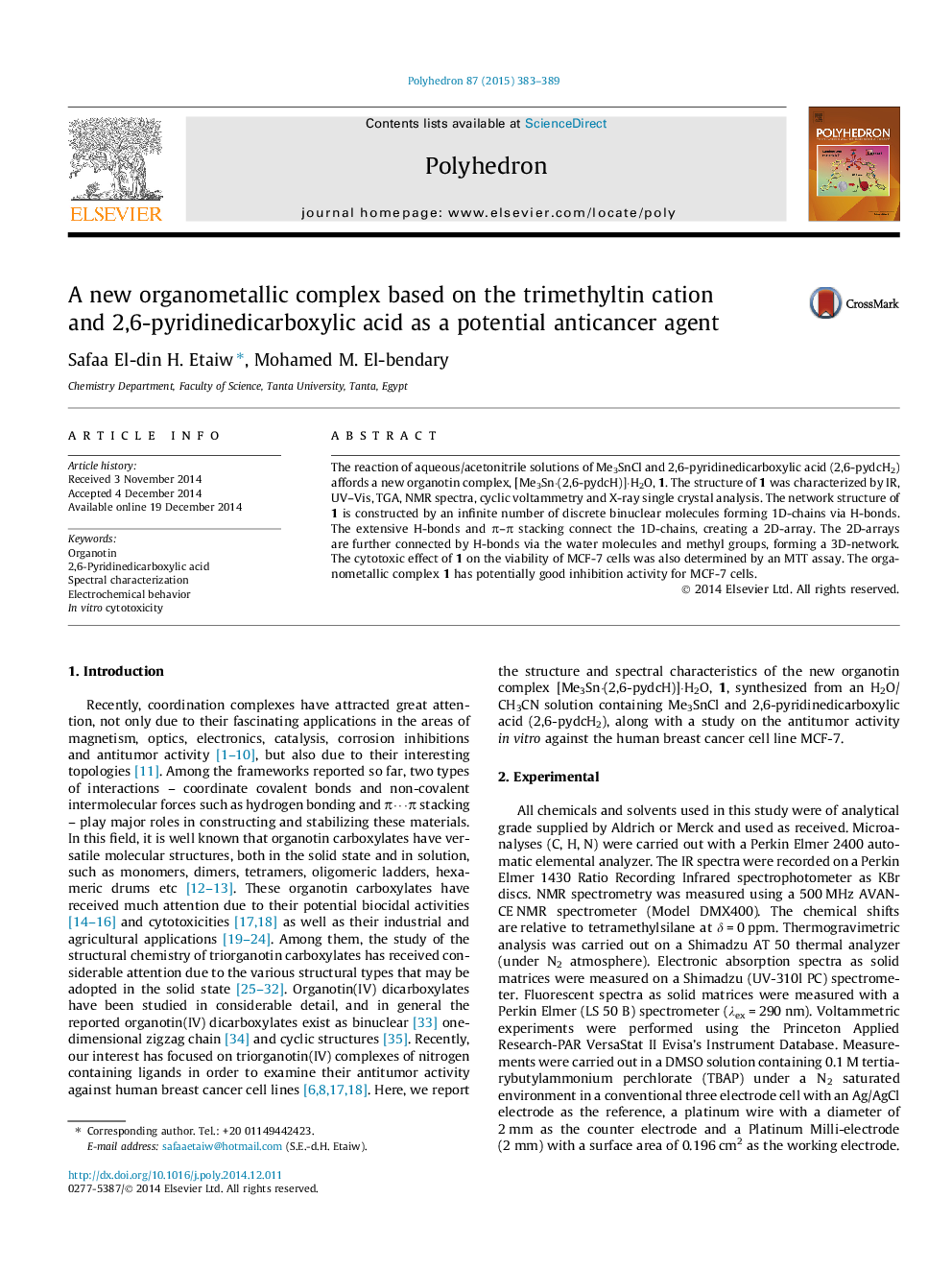| Article ID | Journal | Published Year | Pages | File Type |
|---|---|---|---|---|
| 1337381 | Polyhedron | 2015 | 7 Pages |
The reaction of aqueous/acetonitrile solutions of Me3SnCl and 2,6-pyridinedicarboxylic acid (2,6-pydcH2) affords a new organotin complex, [Me3Sn·(2,6-pydcH)]·H2O, 1. The structure of 1 was characterized by IR, UV–Vis, TGA, NMR spectra, cyclic voltammetry and X-ray single crystal analysis. The network structure of 1 is constructed by an infinite number of discrete binuclear molecules forming 1D-chains via H-bonds. The extensive H-bonds and π–π stacking connect the 1D-chains, creating a 2D-array. The 2D-arrays are further connected by H-bonds via the water molecules and methyl groups, forming a 3D-network. The cytotoxic effect of 1 on the viability of MCF-7 cells was also determined by an MTT assay. The organometallic complex 1 has potentially good inhibition activity for MCF-7 cells.
Graphical abstractThe reaction of Me3SnCl and 2,6-pyridinedicarboxylic acid affords a new organotin complex, [Me3Sn·(2,6-pydc)]·H2O, 1. The structure of 1 was characterized by spectral methods and X-ray single crystal analysis. The MOF 1 has potentially good inhibition activity to MCF-7 cells.Figure optionsDownload full-size imageDownload as PowerPoint slide
